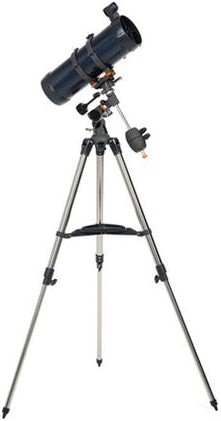Space Debris: Top 5 Objects to Fall from the Sky
May 6, 2015
|
The world has a garbage problem, and it's even greater than what we can see cluttering the land, tainting the skies, and polluting the sea. Our waste stretches all the way to the final frontier. This space junk made up of old bolts, flecks of paint, garbage, and other discarded items that whizz around in low-Earth orbit at speeds around 20,000 MPH. As recently as March, 2012, this shrapnel caused quite a scare for explorers aboard the International Space Station who nearly had to abandon ship after a minor graze. Sometimes bigger objects, like the 22,000 spent rocket stages and dead or dying satellites, find their way through the scorching atmosphere and on a collision course with terra firma. In the same month as the ISP incident, a large U-shaped object like the top of a grain silo was discovered outside a small Siberian village. This piece of space debris weighs around 200 kilograms and is made of titanium, but experts don't believe it's part of any space craft. Obviously, this has lead to a lot of conspiracy theories about an alien cover-up, but it's possible that his wasn't even a UFO fragment. What if it really is just the top of a grain silo? This sparked our curiosity about other fallen debris events. We did some digging and narrowed it all down to a list of our 5 favorite stories. |
Disaster in the Desert
An American Delta II third stage, called the PAM-D (Payload Assist Module-Delta), drifted back into the Earth's atmosphere in a fiery blaze that streaked across the sky and impacted just outside of Riyadh, Saudi Arabia. What's the PAM-D? A 154 pound titanium motor casing, that's what. Luckily it didn't absolutely flatten anyone and landed out in the middle of nowhere. The Delta II's pressurant tank and propellant tank crashed down in faraway Texas the same day.
Collision in Colorado
Imagine you're out for a hike in the beautiful northwestern Colorado countryside when you smell smoke. You stop dead in your tracks and glass the horizon. There's no fire anywhere to be seen, but then you look down and there it is - a smoldering hole in the earth ... but not just any hole: a crater! That's precisely what happened in 2011, and surprisingly the hiker understood the gravity of the situation and immediately called military aerospace officials who ... laughed and told him to just get hold of the county sheriff. Thankfully, enough of the people who came out to investigate the smoking hole told their higher-ups, and through the chain of command it reached the military aerospace officials again. The NASA office in charge of space debris tracking took up the case, and tracked it to a tank from a Russian Zenit-3 rocket that was launched 2 months earlier.
A Tap on the Shoulder
Her name is Lottie Williams and she's the only person in the world to ever be struck by a piece of space junk. Back in 1997, Lottie was walking around a park in Tulsa, OK when she spotted a bright light in the sky and then a tiny spark fly off of the giant burning ball of light. As soon as she saw the spark, it happened - Lottie got a tap on the shoulder, a piece of metal from a Delta II rocket!
"I guess I was in the right or wrong place at the right or wrong time, I haven't decided yet," she said. Lottie wasn't injured and even keeps the chunk of metal locked away as a memento in her home safe.
From Skylab to Sealab
Practically doomed since the beginning, Skylab suffered damage to its micrometeoroid shield at launch. The whole thing had to be repaired, and replacements had to be made in the first ever in-space repair. All-patched-up, Skylab was useful in a great deal of research for about six years, but further repairs to the ship's exterior were delayed yet again in 1979 and the vessel drifted into the atmosphere where it met its demise. The Spacelab module was saved (it was a fantastic workshop after all) and could be used again and again. As for the rest of Skylab? Well let's just say there were a lot of terrified fish in the Indian Ocean that night.
A Mir Drop in the Ocean
It was built Soviet, orbited Russian, and came down ... hard. The Mir Space Station was a famous 15-year-old microgravity research laboratory and the heaviest space station to orbit Earth. In March 2001, this vessel nosedived and the world watched in excitement and fear of the 286,600-pound leviathan's fall. Bursting into over 1,500 fragments upon entering the atmosphere, the Mir Space Station gave quite a light show to the people of Fiji who watched every shooting, smoldering star splash into the Pacific Ocean.



